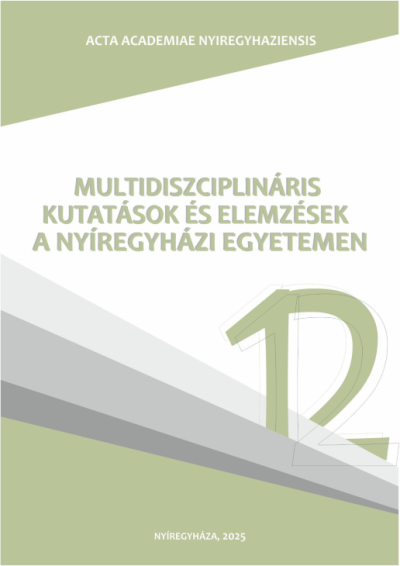 |
Szerzők: |
Összefoglaló
Fiziológiásan a D-vitamin legfontosabb feladata, hogy a vér normális kalcium- és foszforszintjét fenntartsa. Bizonyos csontbetegségek, mint például fejlődésben lévő gyermekeknél a rachitis, illetve felnőtteknél az osteomalacia megelőzése érdekében ezért szükséges a D-vitamin. Tanulmányunkban célunk részletesen bemutatni a D-vitamin szerepét a csontfejlődésre, csontátépülésre élettani szempontból. Hangsúlyt fektetünk továbbá a vitamin hiányában bekövetkező patofiziológiai folyamatok bemutatására és az ennek következtében kialakuló csonttani, morfológiai elváltozásokra.
A paleopatológia régészetileg feltárt temetők emberi maradványait, többségében csontanyagot vizsgál. A történeti populációk vázanyagában is megtalálhatók többek között a Dvitamin hiányában elváltozást mutató csontok, bár a pontos differenciáldiagnózis nem egyértelmű. A jelenleg a kutatócsoportunk általi feldolgozás alatt lévő, bodrogkeresztúri római katolikus templom késő középkorra datált temetője embertani anyagának vizsgálata során is előkerültek feltehetőleg D-vitamin-hiány miatt görbült alsó végtagcsontok. Ezek szolgáltak a jelen tanulmány D-vitamin-hiány átfogó szempontú megközelítése és jelentősége bemutatásának alapjául.
Kulcsszavak: D-vitamin-hiány, rachitis, osteomalacia, csontlézió, paleopatológia, antropológia, történeti embertan
ABSTRACT
Physiologically the most important function of vitamin D is to maintain normal blood levels of calcium and phosphorus. Therefore vitamin D is necessary to prevent certain bone diseases, such as rickets in growing children and osteomalacia in adults. In this study, we aim to describe in detail the role of vitamin D in bone development and bone remodelling from a physiological point of view. Furthermore emphasis will be placed on the pathophysiological processes that occur in vitamin D deficiency and the resulting bone and morphological changes.
Palaeopathology studies human remains, mostly bones, from archaeologically excavated cemeteries. These skeletal material from historical populations may also contain bones with lesions due to vitamin D deficiency, among other things, although the exact differential diagnosis is not clear. The examination of skeletal remains of the late medieval cemetery of the Roman Catholic church of Bodrogkeresztúr, is being processed currently by our research team. This examination revealed curved lower limb bones presumably due to vitamin D deficiency.
FELHASZNÁLT SZAKIRODALOM
Acsádi Gy., Nemeskéri J. (1970): History of Human Life Span and Mortality. Akadémiai Kiadó. Budapest. 113-135.
Brickley M. B., Mays S., George M., Prowse T. L. (2018): Analysis of patterning in the occurrence of skeletal lesions used as indicators of vitamin D deficiency in subadult and adult skeletal remains. International Journal of Paleopathology/23. szám. 43-53. https://doi.org/10.1016/j.ijpp.2018.01.001
Brickley M. B., Mays S., Ives R. (2010): Evaluation and interpretation of residual rickets deformities in adults. International Journal of Osteoarchaeology/20. szám. 54-66. https://doi.org/10.1002/oa.1007
Éry K., Kralovánszky A., Nemeskéri J. (1963): Történeti népességek rekonstrukciójának reprezentációja. Anthropológiai Közlemények. 1963/7. szám. 41-90..
Fonyó A. (1999): Az orvosi élettan tankönyve. Medicina. Budapest. 687-699.
Ives R., Brickley M. (2014): New findings in the identification of adult vitamin D deficiency osteomalacia: Results from a large-scale study. International Journal of Paleopatho-logy/7. szám. 45-56. old. https://doi.org/10.1016/j.ijpp.2014.06.004
Jablonski N. G., Chaplin G. (2018): The roles of vitamin D and cutaneous vitamin D production in human evolution and health. International Journal of Paleopathology/23. szám. 54-59. old. https://doi.org/10.1016/j.ijpp.2018.01.005
Jones G. (2018): The discovery and synthesis of the nutritional factor vitamin D. International Journal of Paleopathology/23. szám. 96-99. old. https://doi.org/10.1016/j.ijpp.2018.01.002
Józsa L. (2006): Paleopatológia, Elődeink betegségei. Budapest. Semmelweis Kiadó. 129-133. old.
Kumar V., Cotran R. S., Robbins S. L. (1994): A pathologia alapjai. Semmelweis. Budapest. 246-250. old.
Lockau L., Atkinson S. A. (2018): Vitamin D's role in health and disease: How does the present inform our understanding of the past? International Journal of Paleopatho-logy/23. szám.
6-14. old. https://doi.org/10.1016/j.ijpp.2017.11.005
Mays S., Brickley M. B. (2018): Vitamin D deficiency in bioarchaeology and beyond: The study of rickets and osteomalacia in the past. International Journal of Paleopatho-logy/23. szám. 1-5. old. https://doi.org/10.1016/j.ijpp.2018.05.004
Mende B. G. (2010): Történeti népességek és betegségeik. (Letöltés 2023. 06. 13.) https://ri.abtk.hu/images/letoltes_publ/mende.balazs/paleopatologia_2.p…;
Meyer A. (2016): Assessment of Diet and Recognition of Nutritional Deficiencies in Paleopathological Studies: A Review. Clinical Anatomy/29. szám. 862-869. https://doi.org/10.1002/ca.22696
Nemeskéri J., Harsányi L., Acsádi Gy. (1960): Methoden zur Diagnose des Lebensalter von Skelettfunden. Anthropologischer Anzeiger 1960/24. szám. 70-95.
Ortner D. J. (2003): Identification of pathological conditions in human skeletal remains. Academic Press. Second edition.
Szenthágothai J., Réthelyi M. (1996): Funkcionálos anatómia. Medicina. Budapest.179-181.